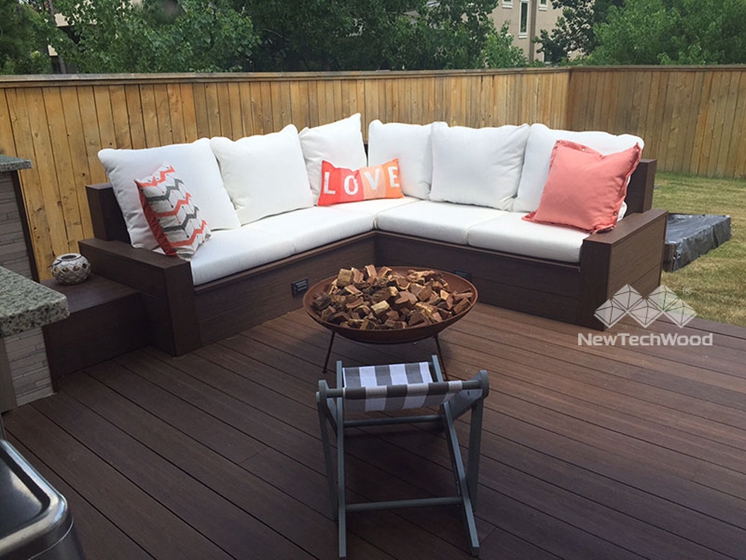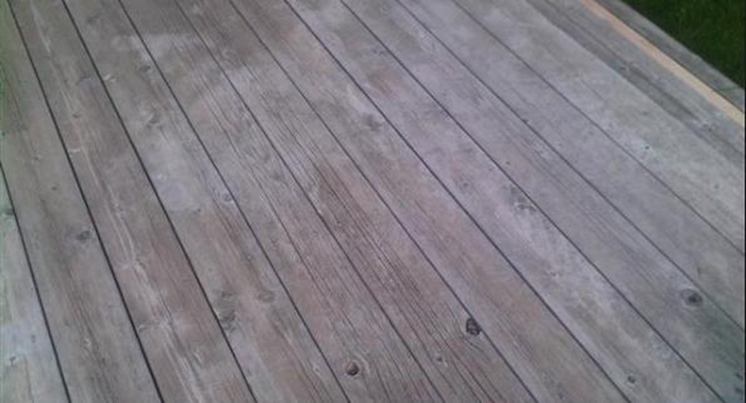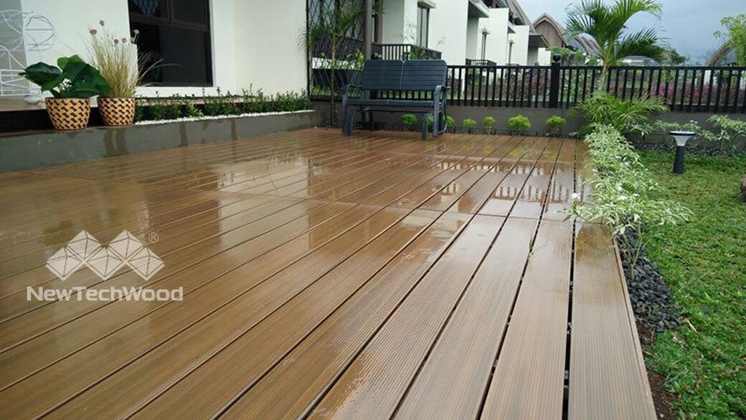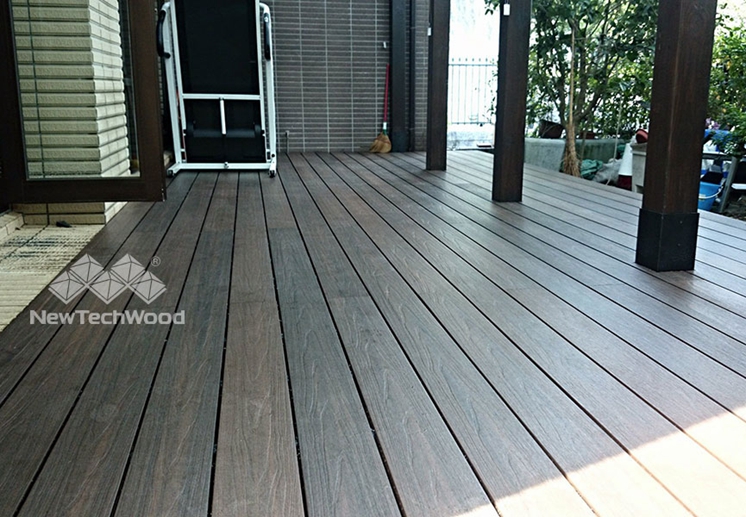Adding a deck creates an outdoor “room” – more quality living space for the whole family, from lazy afternoon siestas to family get-togethers on your new deck.

What are your choices for home decking materials?
Most decks built for home use are constructed of PT (pressure treated) lumber.
This decking is cut from Southern fir, Western pine and other softer woods, making them light and relatively inexpensive. This PT lumber is infused with harsh chemicals that prevent mold, mildew, and other problems common to softwood decking. These harsh chemicals often create a greenish tint to the PT planks that may take a few summers to fade.
When economy is your number one priority, most homeowners turn to pressure treated pine planks because this wood is usually low cost – at least initially.
More expensive woods like cedar and redwood, are not only pricey, they deplete our natural resources. Cedar and redwood are less prone to wood rot than PT pine. However, the cost per square foot goes up, as well. And because these are natural wood, they will eventually crack, warp, or splinter – even with the best of care.

Another choice, growing in popularity among homeowners and builders, is wood-hued composites. Inexpensive manufactured deck planks are fabricated plastics, and often come with a sheen that looks “fake.” It doesn’t look like natural, organic wood. It looks like plastic wood.
Higher-quality wood composite, like the products offered by NewTechWood, is fabricated using high-density recycled plastics and wood fibers – materials that typically end up in our landfills – to create planks that look like real wood and feel like the real deal, as well – even in your bare feet.
Quality-made composite wood decking is manufactured to be eco-friendly and create a durable, natural look with a lower total cost of ownership than wood decks – and look great doing it.
Total Cost of Ownership (TCO)
When choosing construction materials for your new outdoor space, don’t simply consider the initial costs of materials and construction. You’re going to own that deck for a long time and you want it to last without a lot of work.
For example, PT lumber will require the application of wood sealant regularly – every couple of years depending on climate and the amount of use your family space receives.
Many homeowners want to stain or paint their pine decks to cover that greenish tint you see in PT lumber. The weather, the sun, the family activities – all of these take their toll on your outdoor living space. The result?

Routine maintenance and potential expensive repairs. Re-stain it. Reseal it. Power wash it each spring to remove mildew and mold. Replace worn decking weakened over time, creating a potentially dangerous situation. Your soft pine deck needs constant upkeep.
Do it yourself and you’ll spend a lot of Saturdays applying chemicals to the space your family is drawn too. The deck. Pay someone to seal your deck each season and you’ll add to the TCO every time the maintenance crew shows up. Time to write another check.
Woods like cedar and redwood are more expensive, and more weather resistant. However, these expensive materials still need regular upkeep and maintenance. Over time, especially in extreme climates, these natural woods torque and split, leading to costly repairs – even if you DIY.
When calculating total cost of ownership, start with initial costs for materials – but remember, that’s just the start of your expenses.
Add the labor cost of construction and installation. Add the cost of stains, sealants, and routine deck maintenance. Calculate the value of your time if you spend a Saturday sealing the deck instead of snoozing on the deck.

Consider wood composite from NewTechWood. It’s eco-friendly and owner-friendly, requiring less maintenance, no staining or sealants, do-it-yourself construction, and easy maintenance. Composite wood cleans up with a hose, a broom and five minutes.
When calculating TCO, run your numbers out at least 10 years – 20 years is better. How much will the TCO be for your deck? When you add up annual maintenance costs? Hours of painting, staining, sealing, and scrubbing off mold? Don’t just consider the initial cost. Determine the total cost of ownership before construction begins.
Need a little help crunching the numbers? Give us a call or drop us an email at NewTechWood. You’ll quickly see that composite wood is not only the smart choice for outdoor builds, it’s the best choice for your home, your family, and your pocketbook over the long term.